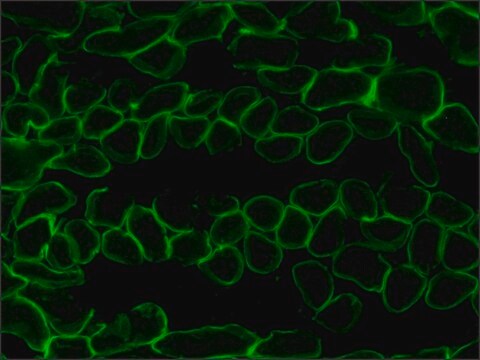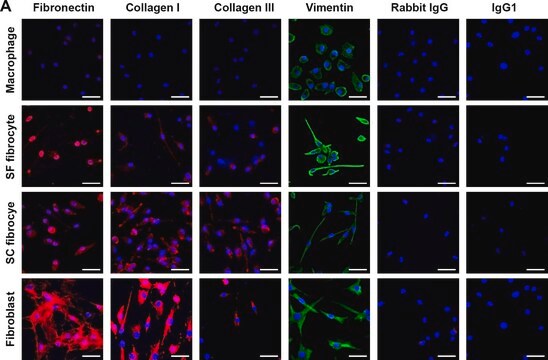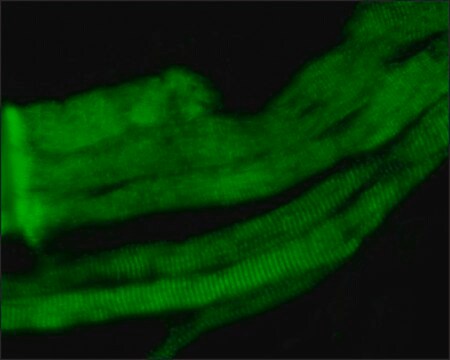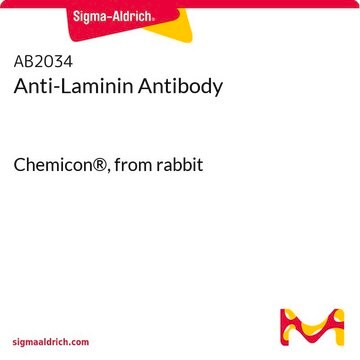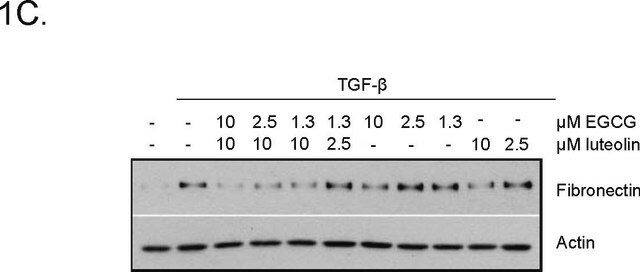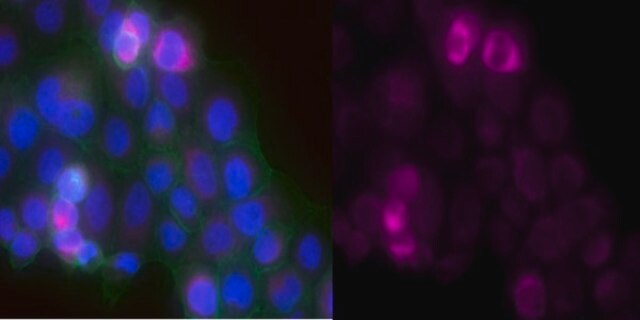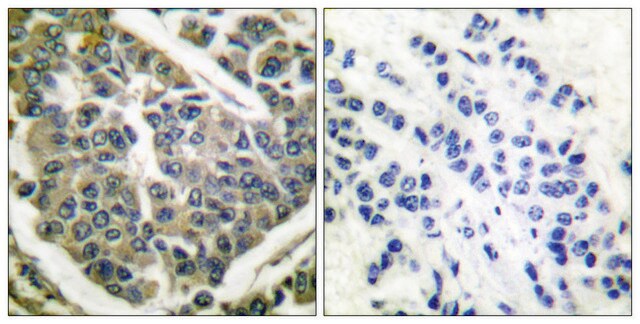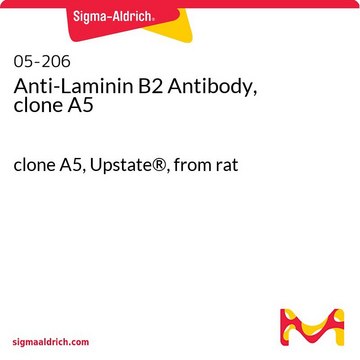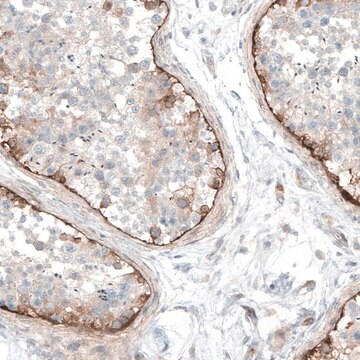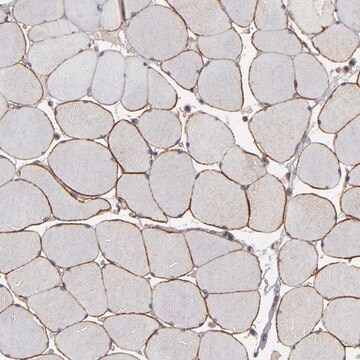L9393
Anti-Laminin (LAMA1) antibody

rabbit polyclonal
Synonim(y):
Laminin Antibody
About This Item
Polecane produkty
Nazwa produktu
Anti-Laminin antibody produced in rabbit, 0.5 mg/mL, affinity isolated antibody, buffered aqueous solution
pochodzenie biologiczne
rabbit
Poziom jakości
białko sprzężone
unconjugated
forma przeciwciała
affinity isolated antibody
rodzaj przeciwciała
primary antibodies
klon
polyclonal
Formularz
buffered aqueous solution
reaktywność gatunkowa
animal, human
rozszerzona walidacja
independent
Learn more about Antibody Enhanced Validation
stężenie
0.5 mg/mL
metody
dot blot: 1:1,000
immunohistochemistry (formalin-fixed, paraffin-embedded sections): 1:30 using human and animal tissues
microarray: suitable
numer dostępu UniProt
Zastosowanie
research pathology
Warunki transportu
dry ice
temp. przechowywania
−20°C
docelowa modyfikacja potranslacyjna
unmodified
informacje o genach
human ... LAMA1(284217)
mouse ... Lama1(16772)
Opis ogólny
Specyficzność
Immunogen
Zastosowanie
A working dilution of at least 1:1,000 was determined by a dot blot immunoassay using laminin at 50 ng per dot.
A working dilution of at least 1:25 was determined by indirect immunohistology using formalin-fixed, paraffin-embedded human and animal tissues.
Działania biochem./fizjol.
Postać fizyczna
Przechowywanie i stabilność
Oświadczenie o zrzeczeniu się odpowiedzialności
Nie możesz znaleźć właściwego produktu?
Wypróbuj nasz Narzędzie selektora produktów.
Kod klasy składowania
10 - Combustible liquids
Klasa zagrożenia wodnego (WGK)
WGK 2
Temperatura zapłonu (°F)
Not applicable
Temperatura zapłonu (°C)
Not applicable
Wybierz jedną z najnowszych wersji:
Masz już ten produkt?
Dokumenty związane z niedawno zakupionymi produktami zostały zamieszczone w Bibliotece dokumentów.
Klienci oglądali również te produkty
Nasz zespół naukowców ma doświadczenie we wszystkich obszarach badań, w tym w naukach przyrodniczych, materiałoznawstwie, syntezie chemicznej, chromatografii, analityce i wielu innych dziedzinach.
Skontaktuj się z zespołem ds. pomocy technicznej